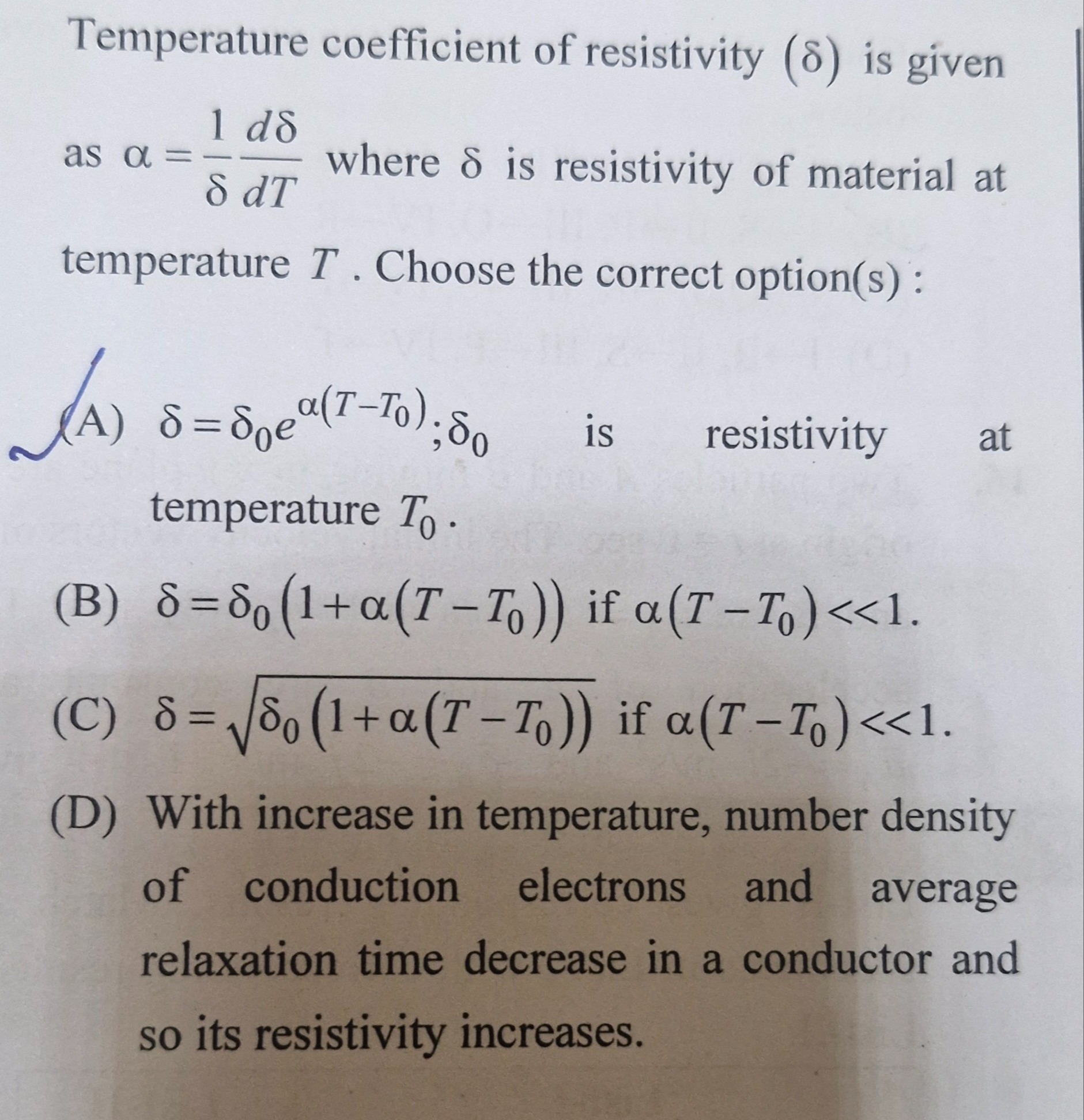Question
Question: Temperature coefficient of resistivity ($\delta$) is given as $\alpha = \frac{1}{\delta}\frac{d\delt...
Temperature coefficient of resistivity (δ) is given as α=δ1dTdδ where δ is resistivity of material at temperature T. Choose the correct option(s):

δ=δ0eα(T−T0); δ0 is resistivity at temperature T0.
δ=δ0(1+α(T−T0)) if α(T−T0)<<1.
δ=δ0(1+α(T−T0)) if α(T−T0)<<1.
With increase in temperature, number density of conduction electrons and average relaxation time decrease in a conductor and so its resistivity increases.
(A) and (B)
Solution
The definition of the temperature coefficient of resistivity is α=δ1dTdδ. Rearranging this gives δdδ=αdT. Integrating both sides from (T0,δ0) to (T,δ) and assuming α is constant, we get ∫δ0δδ′dδ′=∫T0TαdT′, which leads to ln(δ0δ)=α(T−T0), and thus δ=δ0eα(T−T0). This confirms option (A).
For the condition α(T−T0)<<1, we can use the Taylor expansion of ex≈1+x for small x. Substituting x=α(T−T0), we get δ≈δ0(1+α(T−T0)), confirming option (B).
Option (C) is incorrect because the derived relationship does not match the form δ0(1+α(T−T0)).
Option (D) is incorrect for conductors. While resistivity increases with temperature due to a decrease in average relaxation time (τ), the number density of conduction electrons (n) in conductors remains nearly constant with temperature. Resistivity is proportional to 1/τ. Thus, the statement that the number density of conduction electrons decreases is false.
